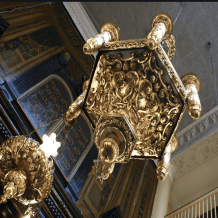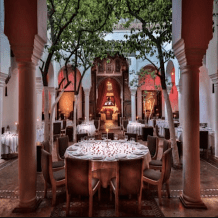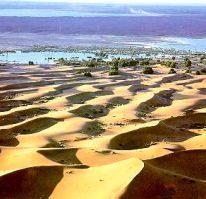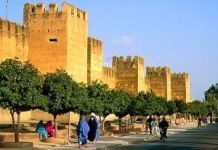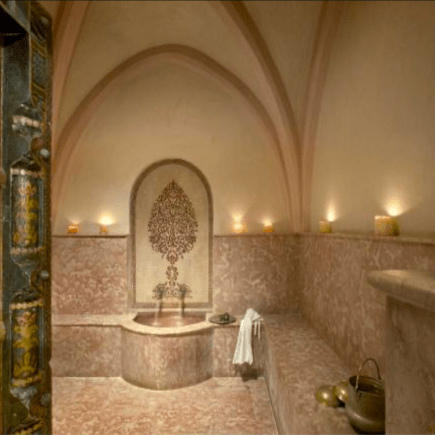
Discover 5 Moroccan Beauty Secrets
Morocco’s production of a wide range of natural goods sourced from its rich agriculture has resulted in the country becoming a top resource for holistic beauty and leading exporter of beauty goods. Unveiling Morocco’s beauty secrets from ancient times are revealed through the and use of traditional products such as argan oil, rose water, black soaps, the prickly pear and purifying ghassoul clay. Moroccan cooperatives and International cosmetic use these traditional properties to create modern products that have been widely adopted in the health and homeopathy beauty industry today. The shelves of natural food stores and cosmetic counters are lined with goods such as argan oil-infused creams, rose water, black soap scrubs, prickly pair regeneration lotions, and soothing ghassoul clay masks. Moroccan beauty has hit the mainstream through Western companies such as Moroccanoil, Sephora and the Body Shop including natural properties in their products of fragrance, body, and hair. Yet, Moroccan women have been using these natural cleansing methods centuries.
Morocco’s wellness and beauty rituals can be explored in Morocco by visiting apothecaries, female-run cooperatives, and botanical gardens.
Indulging in a Moroccan hammam and spa treatment is also recommended where the techniques of the local Moroccan women can be learned. For travelers who wish to see first hand where the beauty products originate, an argan oil cooperative is an exciting place to start. The rural regions of Marrakech and Essaouria, have a significant number where you may learn how Argan oil is produced and used in Moroccan kitchens along with natural cosmetics. When visiting an argan cooperative you will see Moroccan women. cracking argan nuts by hand with rocks, then grinding them with mortar and pestle. Moroccan beauty requires patience and perseverance. A tasting is also a part of the experience.
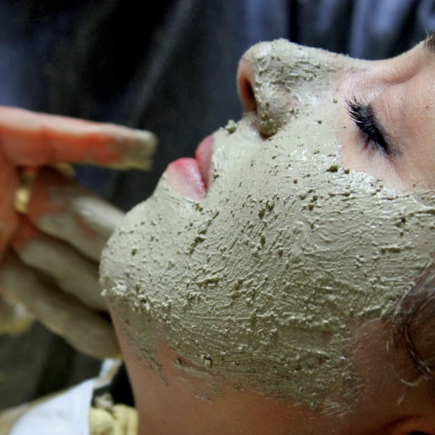
Experience Moroccan Beauty Products by Indulging in a Moroccan Hammam Treatment
An authentic way to experience using traditional Moroccan beauty products is at a hammam. Moroccan hammams are similar to Turkish baths in which you sit in a steam room unclothed, then scrub the dead skin off your body.
Their creation is also said to have been inspired by Greek antiquity and according to the Quran, the Muslim Prophet Mohammed developed the Hammam over 600 years after Christ. According to Islamic culture, the hammam is said to purify the body. Cleansing is an essential criterion prior to praying. Additionally, the hammam tradition is so revered that many Moroccans consider it a “silent doctor.” Each session at the hammam promises shinier, smoother, and more radiant skin.
Throughout Morocco’s villages and cities, men, women, and children all visit the hammam. The weekly ritual also lends an opportunity bond with friends and family. A typical visit to a hammam takes a couple of hours, the spas are separated by gender. Moroccan boutique riads and luxury hotels now offer the hammam as part of a spa regimen. In Marrakech, the Royal Mansour Hotel commissioned by King Mohammed VI and La Mamounia Hotel, where Churchill Winston had his own suite, are two favorite spa destinations.
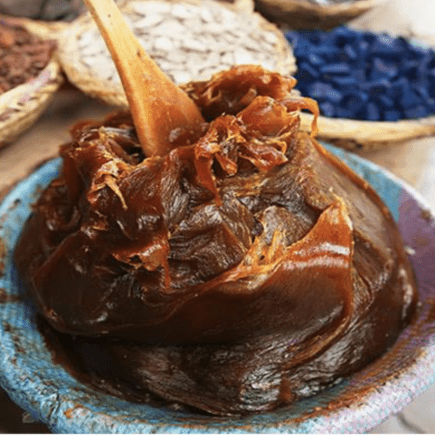
5 Ancient Moroccan Products, The Secret behind Moroccan Beauty.
1. Moroccan Black Soap
The hammam is the ideal place to try this smooth olive-based exfoliating soap. This natural purifier has been used to cleanse the body since the 19th century and is a quintessential part of the Moroccan beauty regime. Black soap is applied directly to the body, then left to break up the dead skin. It is largely made up of olive oil and macerated olives which give it gel-like texture and rutty green color. Some black soaps are enriched with Moroccan essential oils such as Eucalyptus, Rosemary or Peppermint. Black soap is typically left on the skin for 15 minutes before exfoliating with a coarse washcloth or Moroccan kessa mitt. Moroccan women claim that the scrubbing with the glove is essential as, without usage, the skin will not be exfoliated properly. Moroccan black soap also unique properties that help remove old skin tissue. It is rich in vitamin E and helps improve the soften and tone the skin.
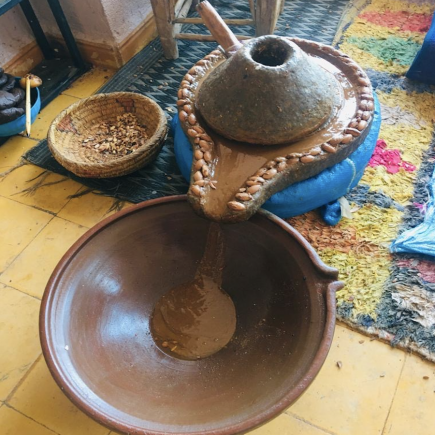
2. Argan Oil
Argan oil seed-bearing trees are indigenous to Morocco and centries old. The Argan nut has been used by the Amazigh people as a holistic cure for brittle nails, split ends, to nourish the scalp, and improve the condition of the skin. For argan oil to deliver the anti-inflammatory compounds it clams to have- these include vitamin E, CoQ10, and polyphenols, and antioxidant properties- the argan oil needs to be cold-pressed and grown in the right conditions. Despite previous attempts to export the Argan tree to other parts of the world, the only two regions where the argania spinosa has proven to grow are in Morocco’s coastal cities of Essaouira and Agadir. During the summer in many Moroccan cities, temperatures can rise beyond 110 degrees. Agadir and Essaouira have a unique climate characterized by strong winds, humidity, and mild temperatures which allow argan trees to thrive.
Moroccan Argan is often referred to as “the golden oil” since it is costly and time-consuming to produce. Morocco is the only country where this delicate tree can grow with it taking almost 30 kilograms of nuts to yield 1 kilogram of oil. A 30ml bottle of argan oil cost in the range of $60 dollars or more. In Morocco, however, it is possible to get find the same quantity with significantly higher quality for half the price.
Beyond cosmetic usage, argan oil is also making its way onto the world’s trendiest gastronomic menus. Argan oil has a nutty taste and is said to have anti-inflammatory benefits that may boost the immune system.
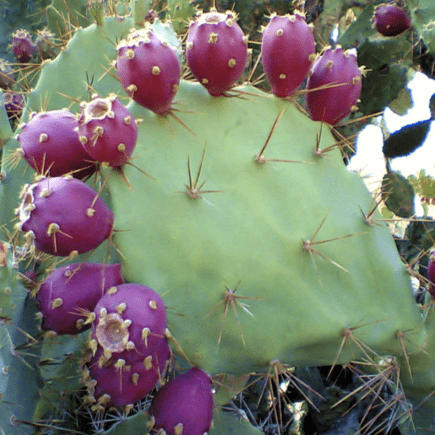
3. Moroccan Prickly Pear
The prickly pear is a newcomer on the beauty scene. Research has demonstrated that prickly pear contains the highest amount of vitamin E compared to any other oil. It has 150% more vitamin E than argan oil. Additionally, it is rich in essential fatty acids that include omega 6 and 9, antioxidants, polyphenols, amino acids, and vitamin K. These super antioxidant properties fight free radicals created from pollution and sun exposure and can help protect against aging and wrinkles. The Prickly Pear’s is highly sought after to reduce scarring, acne, decrease in stretch marks, and brighten the complexion. The Prickly pear cactus grows and thrives in the harsh weather conditions of southern Morocco. Nomadic tribes living in the Sahara use the Prickly Pair for skin hydration and as a protectant.
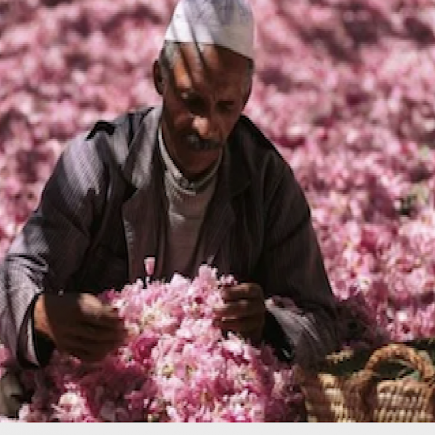
4. Moroccan Rose Water
A fragrant water made with the original Persian rose in Morocco that was cultivated a century ago. Each May, Morocco El Kellat des M’gouna Kella Valley celebrates with a grand festival of roses. Rosewater and other products such as hand and body soaps, oil, crème, perfume, and dried flowers are for sale and also popular among Moroccans. The factories produce 3000-4000 petals a year. With ten tons of petals required to produce a few liters of precious water, the harvest is understandably a labor of love. Moroccan women use rose water is as a refreshing toner and body spray. Moroccan rose water softens and soothes the skin. It also has natural astringent properties that can reduce blemishes and make skin less oily. Rosewater is often used after a hammam or after a waxing session because to calm the skin. Rosewater is multi-versatile and has even been rumored to add a pinkier hue to the lips and protect them against sun exposure. Rosewater can also serve as a gentle makeup remover.
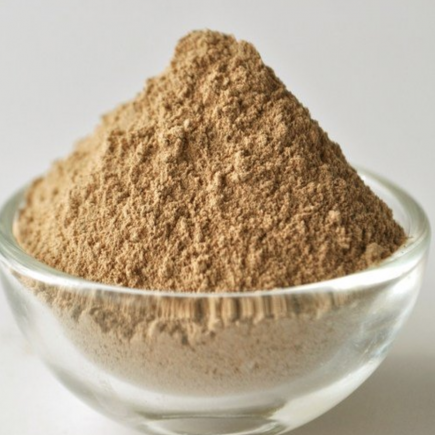
5. Moroccan Ghassoul (rhassoul) Clay
Ghassoul is a 100% natural Moroccan clay sourced from the Atlas mountains and Fes region. The clay is unique to Morocco and is used by locals and beauty enthusiasts for deep cleansing of the hair and skin. Due to its ratio of high aluminum oxide content to low calcium oxide, it can even be used as an eye contour mask. Rhassoul is mineral-rich with a wide range of properties that include magnesium, iron, calcium, zinc, phosphorus, potassium and silica. In addition to black soap, Ghassoul is also used by Moroccan women as part of the hammam ritual.
Ghassoul in Arabic means to purify and to wash. Some records reveal that it has been used for over 1200 years as a body wash exfoliator, and face and scalp cleanser. It is particularly good for sensitive skin since it’s gentle properties do not attack the protective film of the skin or disturb the hair’s protective sheath.
Moroccan women also ghassoul by mixing the clay powder with rose water or essential oils. This increases both it’s fragrance properties and adds therapeutic value. During special occasions like wedding celebrations, ghassoul may be mixed with henna and milk to either decorate the skin or as part of a beautification ritual to soften and smoothen the skin.

